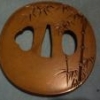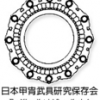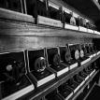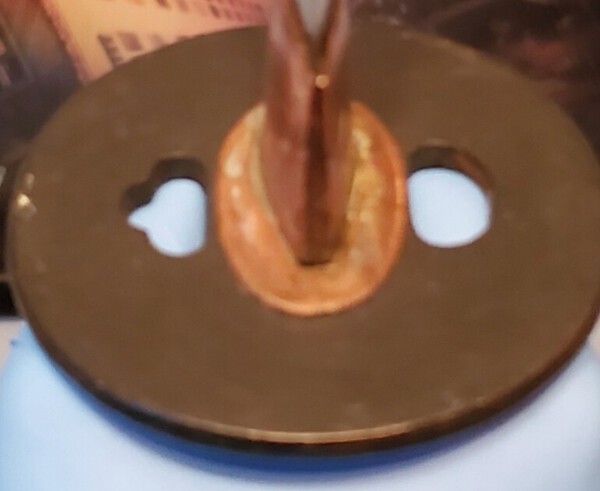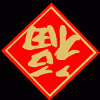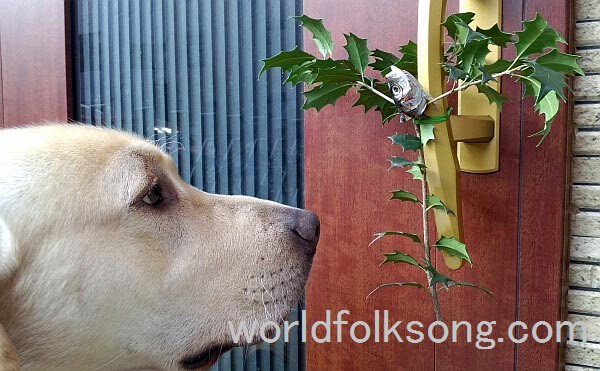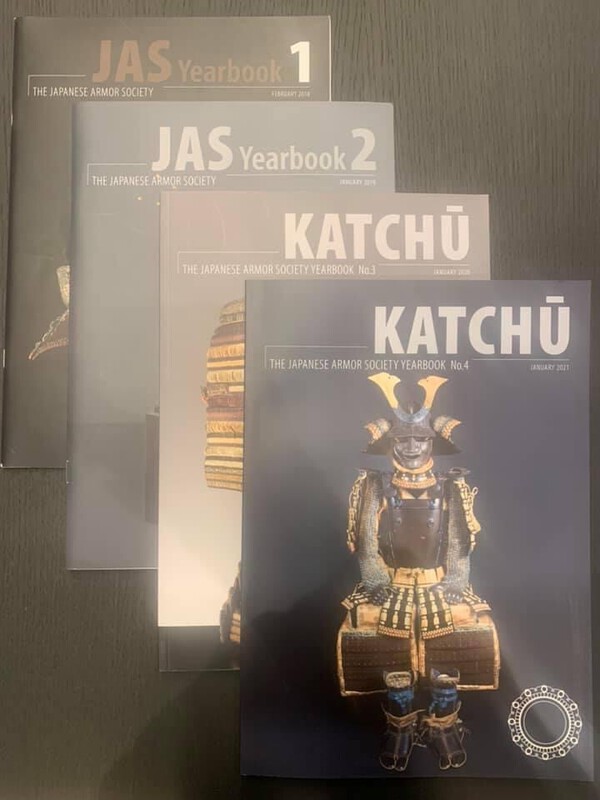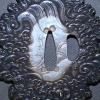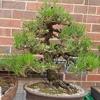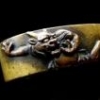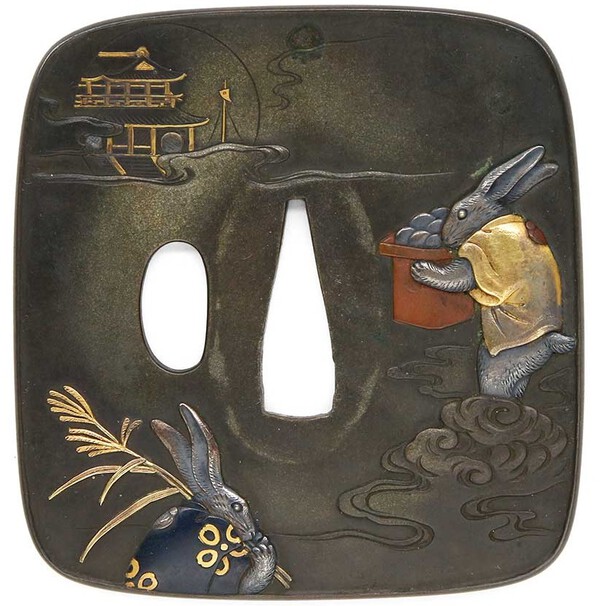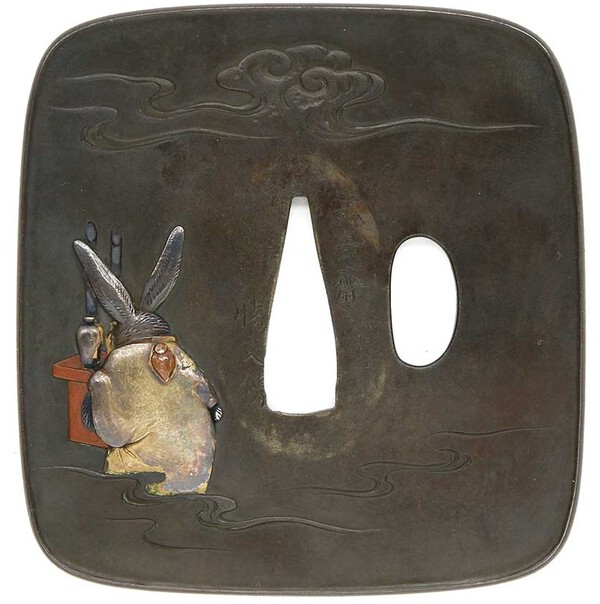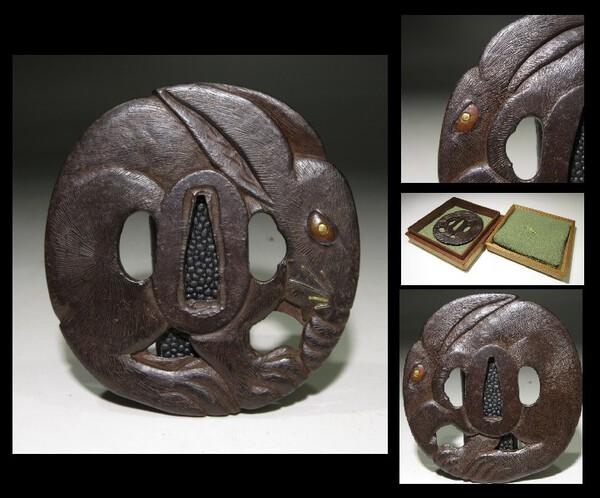Leaderboard
Popular Content
Showing content with the highest reputation on 01/23/2021 in all areas
-
Contemporary swordsmith Taro Asano (Fusataro) recreates an Edo period torture test on his sword. He has his apprentice cut various objects including tatami mats, stainless steel bowls, deer antler, a piece of iron, hitting the mune with a heavy wooden sword, among others. My book about modern swordsmiths says that a common criticism of shinsakuto is that they concentrate too much on the art aspect. In this video he pushes his sword to the limit and beyond until it breaks, bends, and chips. I found it fascinating as I've never seen a test like this done with shinsakuto. People often tout the superiority of koto swords but it's only being evaluated on its appearance and not durability, edge retention, and such. I know nobody would do this with an antique but I wonder how swords of the various periods would stack up against each other.5 points
-
2 points
-
Maxime, ASANO TARO is different from many other Japanese swordsmiths in that he is very open-minded and willing to teach even Westerners about his craft. On YouTube, you can watch a number of videos if you search for FUSATARO or ASANOKAJIYA, and new videos can be found by this link: https://www.youtube.com/channel/UCoGGejL91Ck0ecftCNuiAKA/videos Just today, I got a message from him announcing new English language videos (as I had suggested to him). Send me a note in case you want to contact him.2 points
-
2 points
-
Hello! From what I can gather there, it seems your scabbard saya is a military Gunto of sorts as it looks like its has a leather skin and the gold fitting to me, seems to be a mass produced military issue (original or not I have no idea). As for the Tsuba, it looks far too big to be for Tanto and as far as I am aware, a Katana Tsuba can have 1, 2 or no hitsu ana. I would have thought size is more of a deciding factor when it comes to classing a Tsuba to be for a Kat, Wak or Tanto? Tanto and Wakizashi can also have Kogai and Kozuka in their scabbard. Even having said that, a smaller Tsuba on a larger blade is not unheard of and can look pretty good in my opinion. I don't mind being corrected for those that know infinitely more!?2 points
-
2 points
-
2 points
-
1 point
-
Thanks Inna! I'll get some guys to look at that mon. Steve can comment on the blade, but I like it. I'll get back when I get word on the mon.1 point
-
This is a fascinating topic. While I am a mere novice on the topic of Japanese Nihonto, nata, etc I do have some experience on the topic of the cutting of heads, having beheaded many animals ranging in size from sheep to bull elk. Additionally, during my participation in the US military’s campaigns against the Taliban and Islamic State I have had the distressing experience of watching many propaganda videos of beheadings, and have personally encountered and examined several beheaded human bodies. Finally I studied medieval history for my undergraduate degree, a field in which one inevitably winds up reading accounts of judicial beheadings A couple points from this data then. First off cutting off a head is an extraordinarily awkward, messy and difficult task if you don’t know what you are doing. On the other hand if you understand the principles of jointing and related butchery, it is quite easy to quickly and neatly remove the head of even quite a large animal with nothing more than a small sharp knife if you sever the windpipe and properly get the blade between the vertebrae. I am not surprised that there are detailed Japanese explanations for how a warrior should go about the task, as screwing it up would be a remarkably undignified experience, to include risk of serious accidental injury to oneself. Secondly, “chopping” a head off is exceedingly difficult, even for professionals with specialist tools. There are plenty of medieval and early modern accounts of judicial executioners using axes and swords designed for the task making a messy cock up of it. I would venture to say it’s even harder to “chop” the head off a dead, limp body than it is to do so to a living victim due to the respective body positions of chopper and victim. The nata or “kubikiri” pictured would not be very effective for “chopping” a head off at all. If you don’t know how to bone and joint, then a saw is an infinitely better, neater and safer tool for beheading than any sort of chopping implement; which I think some of the period Japanese scrolls and descriptions of such things bears out. On the other hand, I agree with the members who have suggested more mundane uses for even the fancier and more exotic looking blades pictured. They bear close resemblance to stylized versions of specialist harvesting tools such as sickles, etc. one still encounters in undeveloped parts of the world or in use by arborists, in orchards, etc for cutting certain types of plant stalks, cane cutting, precisely and cleanly lopping small tree limbs, in basket making and weaving of fish weirs and similar objects. When one considers that in Japan some aspects of these “agricultural” or gardening tasks had become highly ritualized and stylized by the Edo period, and were very much an “elite” activity as much as one done by peasants in the fields then it is easy to imagine why wealthy persons might commission elaborate nata with beautiful fittings and tempered edges. Anyway, a very interesting and informative discussion here, I’ve learned a ton and look forward to hearing others’ thoughts on the matter.1 point
-
hold the blade to a light bulb looking down toward the bulb you'll see if the plains are flat n smooth it was done right. if you see wavy or worse a washboard it was done by amateur.1 point
-
1 point
-
Hi,got 3 books Connoisseur, military swords modern Japanese swordsmiths and facts and fundamentals on the way, Any more I should be looking at. Thanks Mark1 point
-
Ara nie (size and number) are not always a sign of quality but often show a poor control of the quenching temperature. They can be found in sue Soshu and Shinshinto. An uninformed eye can take this flaw for a quality characteristic.1 point
-
you probably know it, but this article is excellent on the subject : https://markussesko.com/2019/08/27/destructive-sword-testing/1 point
-
I do not dare to suggest a window in the ukebari, a door maybe? :-) no serious. From what I can see, i date this hachi early 15th century1 point
-
1 point
-
At first I was worried, thinking that it was made by a smith that is no longer among us and I think that is why, most often, we are troubled when we see a sword being used. The idea of 'that is one less blade that will be around' but I found some comfort to know that this smith is alive and will be making more. It was also nice to see his elation at his sword performing, a bit like a proud father watching their child do something for the first time. Edit: After having finished watching it. I think I understand why deer horn was used in many a kabuto now. That stuff destroys hardened edges like no one's business. I hope this blade will be reborn into a new blade. It is nice to see the smith having drawn some useful knowledge from this.1 point
-
Thank you Eric, for publishing the image. Let me correct it, this is not an iebori like the Goto family. The style is machibori's shishi. Therefore, I think that the era is newer than the middle Edo period (1700 A.D.), not the early Edo period.1 point
-
1 point
-
I need good pictures to help with a sufficient answer Peter. It is a illusion to think that everything is visible from the outside.1 point
-
Thanks guys. This is why I will seek help before shelling out the green. I really appreciate the help. I know he paid 150 when he bought it. I will pay zero. Thank you.1 point
-
Hi Justin! I would be interested in these pictures, if you don’t mind...?!1 point
-
1 point
-
1 point
-
Hi Yakozen, thank you for your reply. I have not considered missing pins (ne). I am having a Koshirae built for a sword I bought. I was hoping to show when complete for some discussion and kantei. However, I see your point of view and will show the menuki early. I have asked the seller about the back/plate/fill material and if the pins are intact. What school would you or others think these are from? Other comments are welcome. Measurements: Length 1: 2.95cm x 1.44cm Length 2: 3.01cm x 1.34cm1 point
-
1 point
-
Ref. A Gendai blades mei translation help - Translation Assistance - Nihonto Message Board (militaria.co.za)1 point
-
The term satsuma rebellion refers more to a koshirae than to the sword itself, the one whose picture I have shown is a wakizashi mumei ubu from the province of Satsuma (probably Shinto). I would like to add that Takamori's forces included people who were not samurai and had to be armed, hence the need to equip the existing stock of unmounted blades.1 point
-
1 point
-
1 point
-
1 point
-
1 point
-
I'm not feeling very well cared for the NMB. This is MY (!) kabuto. I started this discussion. I asked for the help and advice of this community. I mentioned no names but I asked - with full respect - the wisdom of this community. My assessment is that the NMB is a good place to go to if you are at a pawn shop and need help weeding out modern Chinese fakes. Peter0 points
-
It sometimes makes me wonder if the artist spent more time looking at rats than rabbits.....0 points
This leaderboard is set to Johannesburg/GMT+02:00


